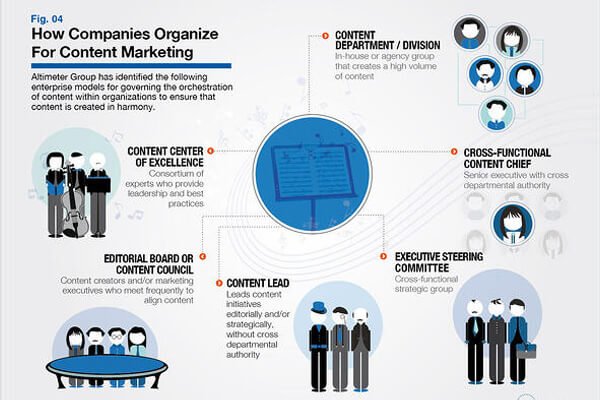Enterprise architecture (EA) is a crucial discipline that enables organizations to manage their business and technological assets consistently and efficiently. By offering a holistic perspective of an organization’s capabilities, processes, and systems, enterprise architecture (EA) assists in aligning business and IT strategy and optimizing resource utilization. Nonetheless, establishing and implementing an efficient EA process is not simple. Companies should be aware of numerous excellent and worst practices when implementing EA.
In this article, we will examine the best and worst practices for an enterprise architecture process and provide advice on what firms should be mindful of while implementing EA.
Best Practices
Strong Administration
Establishing a sound governance framework is a crucial best practice for EA. A governance framework provides the roles, responsibilities, decision-making processes, and guiding policies for EA operations. A well-designed governance structure ensures that enterprise architecture is aligned with the organization’s overarching strategy, goals, and objectives. In addition, it promotes openness, accountability, and collaboration among stakeholders.
Communication and Coordination
EA is a discipline that involves multiple functions, including business units, Technology, and other functions. Hence, collaboration and communication effectiveness are crucial for success. Include stakeholders from many organizational divisions in the EA process and encourage open debate and feedback. This ensures everyone is aligned around a shared vision and that enterprise architecture is connected with other strategic objectives.
Constant Improvement
EA is a continuous process that must adapt as the organization’s needs and goals vary. Thus, a continual improvement strategy ensures that EA remains relevant and applicable. Businesses should build metrics and feedback channels to assess the efficacy of their EA process and use this data to find improvement opportunities.
Concentrate on Business Results
EA should be driven by the enterprise’s business objectives, not by technology per se. This implies that EA should concentrate on producing business results, such as enhancing the customer experience, boosting revenue, or lowering costs. Businesses should prioritize EA activities based on their influence on business outcomes and link their EA process with the organization’s broader business strategy.
Use of Common Frameworks and Models

Numerous well-established frameworks and models, including as TOGAF, Zachman, and FEAF, can be utilized to design an EA process. These standards can aid in maintaining uniformity, promoting best practices, and facilitating communication. Businesses should select a framework suitable for their organization’s needs and modify it to meet their specifications.
Practices to Avoid
Absence of Governance
The absence of governance is one of the greatest dangers of executing an EA approach. Without a defined governance framework, enterprise architecture (EA) activities may become isolated from the organization’s strategy and objectives, resulting in lost resources and missed opportunities. Businesses should build a governance structure that clearly outlines EA operations’ roles, responsibilities, and decision-making procedures.
Independence from Business Units
EA should be created in consultation with business units and other stakeholders to ensure that it meets the needs of the enterprise. If EA is built in isolation from the business, IT and business priorities may not be aligned, resulting in misaligned plans and objectives. Include stakeholders from many organizational divisions in the EA process and encourage open debate and feedback.
Overly intricate
EA might become unnecessarily complicated if there are too many levels of abstraction, too many standards to follow, or too much documentation. An overly complex EA process can be challenging to comprehend, implement, and manage, leading to stakeholders’ confusion and frustration. Businesses should aim to keep their EA process straightforward, focused, and simple to comprehend.
Technology-Driven
If technology drives EA rather than business results, it can lead to ineffective IT spending. This might lead to an imbalance between IT and business priorities. EA should prioritize delivering business outcomes than merely deploying the newest technologies.
Lacking in adaptability
EA should be flexible and responsive to changing business requirements. An inflexible EA process might inhibit an organization’s responsiveness to new problems and opportunities. The architecture of enterprise architecture (EA) should be built to be adaptable to changes in the business environment.
Enterprise Architecture Implementation
To ensure the success of an enterprise architecture (EA) implementation, there are several factors that firms must consider. Here are a few important considerations:
The EA process should include well-defined objectives, targets, and deliverables. The objectives should fit with the business plan of the organization and be attainable. The EA process may lack direction and purpose, and its impact on the organization may be restricted without clear objectives.
Allocation of Resources: The EA process involves time, money, and manpower. The organization must allocate adequate resources to ensure the success of the EA process. This entails providing an adequate budget, personnel, and technological infrastructure to support the EA process.
Change Management: The EA process can drastically alter a business’s technology, processes, and operations. Change management is critical to ensure the changes are adopted smoothly and without disruptions. This includes communicating the changes effectively, providing training and support to staff, and managing resistance to change.
Implementation Plan: The EA process must have an implementation plan that outlines the steps to be taken, the timeline, and the resources required to implement the changes. This strategy should be evaluated and revised frequently to reflect organizational needs or priorities changes.
Ongoing Improvement: Environmental assessment is an ongoing process requiring continual improvement. The organization must continually evaluate and improve the EA process to remain relevant and practical. This includes measuring the EA process’s effectiveness, identifying improvement areas, and implementing necessary changes.
Stakeholder Engagement: EA involves engaging with stakeholders from different parts of the organization, including business leaders, IT leaders, and end-users. Engaging with these stakeholders is critical to ensuring that the EA process addresses everyone’s needs and concerns. This includes soliciting feedback from stakeholders, communicating the benefits of the EA process, and addressing any issues or concerns.
Governance: Governance ensures that the EA process is consistent, repeatable, and accountable. A governance framework should ensure that decisions are made according to the organization’s policies, standards, and guidelines. This includes establishing clear roles and responsibilities, defining decision-making processes, and monitoring the performance of the EA process.
In summary, when implementing an EA process, companies must carefully consider their objectives, resource allocation, change management, implementation plan, continuous improvement, stakeholder engagement, and governance. By addressing these considerations, companies can increase the likelihood of a successful EA process that supports their business goals and objectives.



